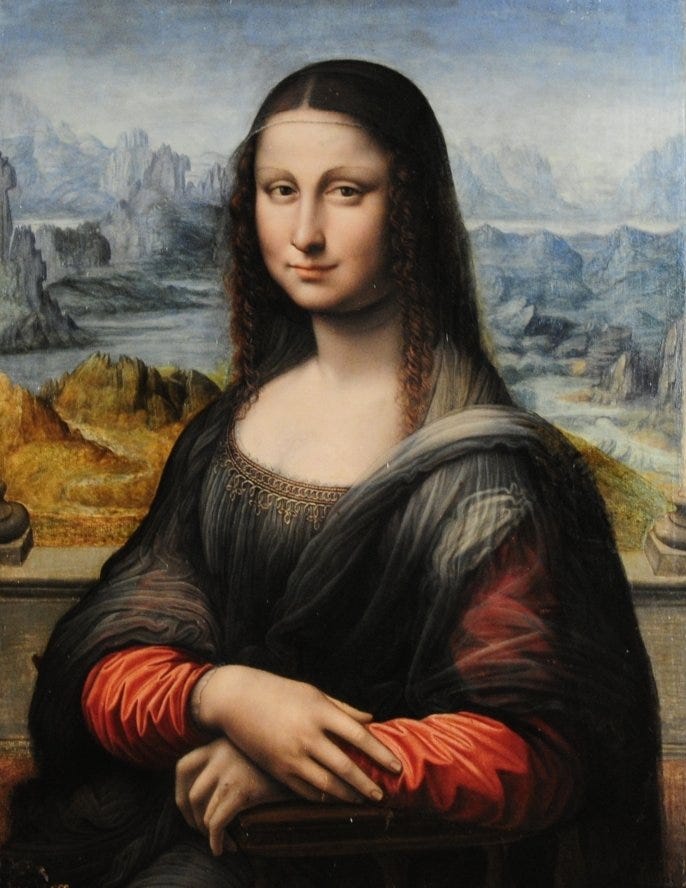 eonardo da Vinci marked the Renaissance with his multilateral genius. After the disappearance of the great Florentine, his paintings were scattered, especially in private collections, and his notes lay for several centuries in various other collections. Leonardo’s inventions and discoveries span more than 50 fields of science, anticipating the development directions of contemporary civilization, and in every discovery of it, there is an enigma.
eonardo da Vinci marked the Renaissance with his multilateral genius. After the disappearance of the great Florentine, his paintings were scattered, especially in private collections, and his notes lay for several centuries in various other collections. Leonardo’s inventions and discoveries span more than 50 fields of science, anticipating the development directions of contemporary civilization, and in every discovery of it, there is an enigma.
Thirst for Knowledge
Leonardo was born in 1452, near the settlement of Vinci, not far from Florence. The child’s parents were the notary Pierrot and his girlfriend, the peasant Caterina. As a small child, Leonardo was always enthusiastic when it came to education and preferred books over toys as presents. It is said that he always had the desire to gain knowledge.
Florence was then a cultural center, which allowed Leonardo to study science and acquire some technical skills. He studied line drawing, chemistry, metallurgy, metalworking, plaster, and leather. At the same time, the young journeyman drew, sculpted, and modeled. The enigma does not consist in the number of fields of science and human activity that he tended to cover, but in the fact that a special depth highlighted all his knowledge, Leonardo being a specialist in those fields.
This man had been so talented that even contemporary researchers are amazed at his skills. How did a man manage to comprehend so much knowledge? At the age of 14, Leonardo knew how to play the lyre very well. The paradox is that he had no teacher, being self-taught in this field. With his divine voice and his mastery of playing the lyre, Leonardo also amazed professional musicians.
Self-Control
Nature had endowed him with special outward qualities — he was handsome, tall, and fine. According to some testimonies, Leonardo was also very strong. Being clumsy, he could bend a horseshoe with his right hand! His contemporaries reported that Leonardo never showed his emotions and was always in a balanced state of mind; no one has ever seen him jump for joy or be sad. He could control his emotions, which speaks to his strong will and his complete self-control.
Leonardo’s diaries, some 7,000 pages, have been preserved to this day, and are in different collections. At first, the invaluable notebooks were kept by the master’s most beloved student, Francesco Melzi, but after his death, the manuscripts disappeared. Some fragments began to appear at the border of the 18th and 19th centuries.

Many people in whose hands they had come did not even suspect how important the treasures they possessed were. When the scientists established the author, it was found that essays on art, anatomical sketches, and strange schemes, and studies in the fields of geology, architecture, hydraulics, geometry, philosophy, optics, technical drawing, and military fortifications — are the fruit of one’s work.
All the notes in Leonardo’s diaries are written in the mirror. Many consider that this is how he wanted to keep his research a secret, but, according to another version, writing in the mirror was characteristic of him (there is data in which it is stated that it was easier for him to write like this than usual). There is even the notion of “Leonardo’s writing.”
Best known as Artist

First of all, Leonardo da Vinci is known to us as a painter. He is the one who created the brilliant portrait of the Mona Lisa (Mona Lisa). The expression of Gioconda’s face cannot be explained, as can the technique of making the portrait. Her main enigma is the enigmatic expression on her face, her “evasive” smile.
Some consider it the ideal greatness of charm and femininity, while others find it unpleasant. Contemporary scientists have tried to investigate the mysterious portrait using a computer program. What kind of emotions does Gioconda’s smile hide? The electronic answer showed that Mona Lisa’s expression shows happiness (83%) and, at the same time, disgust (9%), fear (6%), and malice (2%). Such calculations add nothing to a better knowledge of the portrait, whose enigma has remained impenetrable to this day.

One of the most famous drawings made by Da Vinci is the Vitruvian Man, which represents the human body, proportionate, inscribed in a circle and a square — fundamental figures of the cosmic order, which is a form of respect for the three architectural orders invented by the Greeks: Doric, Ionic, Corinthian.
Much less striking is a lesser-known drawing by da Vinci, which represents a special, “unearthly” being. It is believed that this was Beatrice, praised by the poet Dante. The woman’s face is beautiful, and she charms anyone who sees her. You will ask, “And what attracts you?” Eyes that are located at a great distance from each other!
In 2009, in a study, the Italian researcher Sabrina Sforza Galitzia states that a code is encoded in the painting — “a mathematical and astrological puzzle” in which the date of the end of the world is predicted. She states that the painting contains information that the end of the world will be a “universal flood,” which will begin on March 21, 4006, and end on November 1 of the same year.
The Italian researcher also discovered some documents related to the activity of the great Da Vinci, according to which he would have considered this universal flood right “a new beginning for humanity”. It is not excluded that da Vinci also created sculptures. Researchers at the University of Perugia say that the terracotta head discovered in 1990 is the only sculptural creation of Leonardo, preserved to this day. Da Vinci himself considered himself an engineer or a scholar and devoted less time to fine art, working very slowly. Therefore, the artistic legacy left by Leonardo is not great, a series of his works being lost or severely damaged.
An Innovative inventor
The important thing is that Leonardo da Vinci was a brilliant and tireless inventor. There is an invention of his that has been recognized since he was alive — “Wheelock — rotary unlock for the gun” (the mechanism that was turned on with the key). At first, such pistols were less common, but in the mid-16th century, the model gained popularity among aristocrats, especially among knights. This system was so good that it was used to make weapons in the 19th century.

Leonardo’s other studies far exceeded the thinking of his contemporaries. For example, he was interested in in-flight issues. In Milan, he made several sketches showing that he studied the flight of birds and bats. In addition to observations on the flight, the famous scientist also performed experiments, but they failed. Leonardo really wanted to build an aircraft. He said, “He who knows everything can do everything. I need to find out — and the wings will be! ”To build and use an aircraft, he lacked only one thing: an engine that could develop enough force. He had sensed the other details of the device.
The geologist Da Vinci intuited that the presence of mountains is based on the depths of missing seas and that they have risen over long periods of time. His theory, which seemed illogical at the time, was confirmed centuries later.
In a word, his many talents amazed the world at that time and continue to amaze it today. Da Vinci is unique; In the history of mankind, there has never been a man with so many talents! So who was he really? It had been saying before that the people in his circle were suspicious, and it had even been rumored that they were followers of the secret sciences.
His mentality far exceeded not only the level of his contemporaries but also of man in general. That’s why sensation enthusiasts call Leonardo a time navigator or a guest in a parallel world. Every time researchers believe that they are very close to deciphering the riddles of the great genius, they finally come to understand that they are even further from the truth. “Io continuero” (I will continue), wrote the brilliant artist, scientist, and inventor Leonardo Da Vinci in his notes. And he was right: his inventions and works are the basis for the development of art and science.
Avid Writer with invaluable knowledge of Humanity!
Upcoming historian with over 30 million views online.
“You make your own life.”





